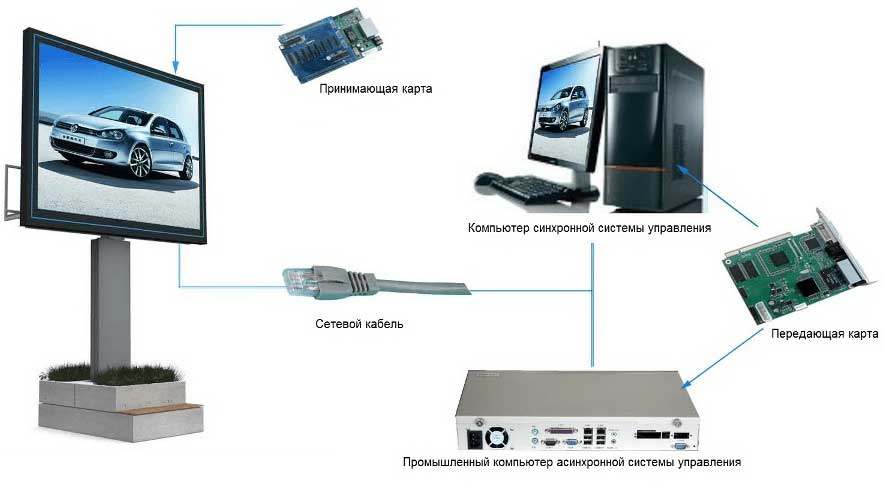From previous articles we have already learned the basic concepts и elements of the LED screen, in this article we will explore LED screen control.
The original image for LED screen display is prepared in form of video format (* .avi, * .mpg) and then converted by the computer or video controller that controls the screen into digital stream to the DC driver microchips from which the voltage is transferred in a particular sequence to the screen LEDs.
The image quality largely depends on LED screen control system capabilities, which can be synchronous or asynchronous.

LED screen control scheme
In case of a synchronous LED display control system, the screen shows the same image as the computer, you might say that it displays the video data "live". For example, it is possible to broadcast directly from a camera. This control system consists of a transmitting chip and several receiving chips. The transmitter card is inserted into the computer, while receiving cards are installed into the screen cabinet, they are all connected with a UTP-cable. Synchronous control system allows you to receive information from external devices: videocameras, TV tuners, etc. and store the video in the host computer memory.
Asynchronous system is characterized by storing screen content is into the controller's memory. Usually this is done by a flash card or a network cable. Asynchronous system consists of controllers, the number of which is determined by screen size. This control system allows the screen to operate autonomously in compliance with a particular program but without a computer.
